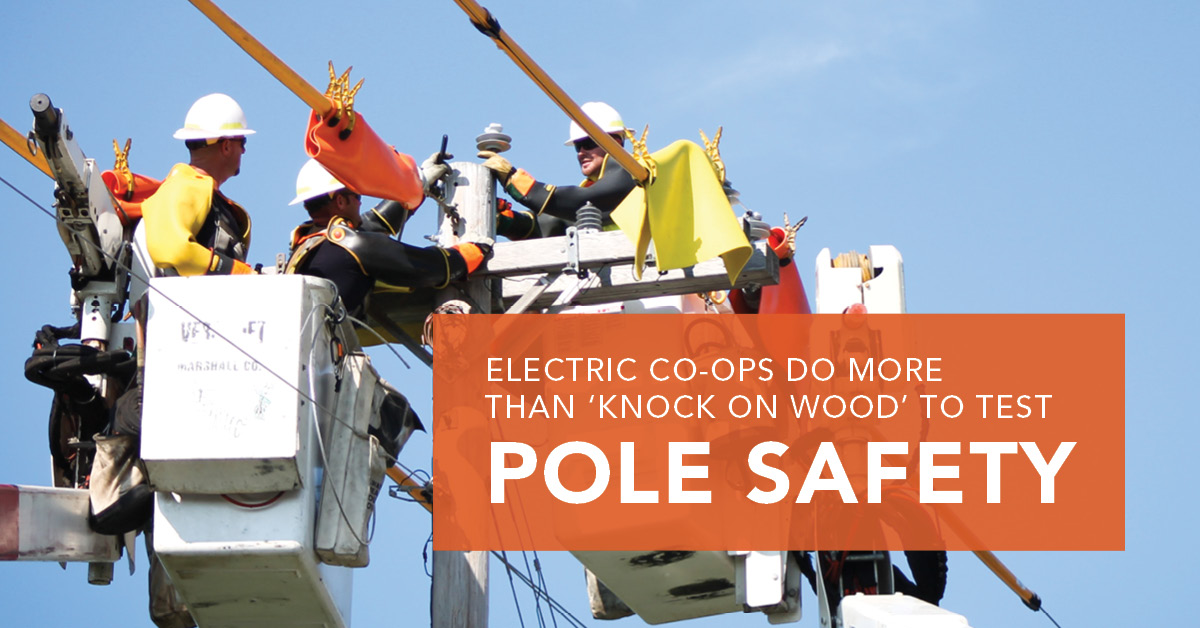
Utility poles remain the backbone of most electric distribution systems. After more than 80 years since electric cooperatives first set them throughout rural Indiana, they remain the most cost-effective way to safely support power lines, insulators, transformers and other electric hardware.
Occasionally, either through a vehicle strike, lightning strike, ice storm, tornado, or simply age, a pole needs to be replaced. And while every electric cooperative has thousands of poles throughout its system, each pole replacement is different. It’s much more than just digging a hole and sliding a new pole in the ground. The work is done methodically and, even in the best scenarios and weather conditions, might take several hours.
One of the most common reasons for a broken pole and an unexpected power outage is a vehicle strike. Here’s a step-by-step description of what typically goes into a pole replacement so that consumers on the “dark side” of the damaged pole can better understand why the power outage affecting them might be taking longer than they would think.
Assess the situation. The cooperative is notified of a broken pole. This can come from the cooperative’s own monitoring system, sheriff’s department or consumers. Lineworkers will visit the pole and assess the damage. This may take 30 minutes to an hour depending on the location and if the notification comes outside of normal business hours.
Secure the scene and call in a crew. If the pole needs to be replaced, the lineworkers on the scene will first make sure the scene is safe. They’ll de-energize the pole following established safety procedures. Next, they will call for a crew of three to four others to come with a bucket truck and a digger truck.
Obtain supplies and tools. The original responding lineworkers will work on what can be done until the additional crews arrive with a new pole and replacement equipment. Depending on the weather and the proximity of the broken pole to the replacement pole and equipment, this may take 1-2 hours.
Replace the damaged pole. When all crew members are present, they begin setting a new pole and will work to safely restore power to consumers as quickly as possible.
This includes removing equipment from the broken pole and attaching the necessary equipment to the new pole. Depending on the location, the equipment needed on each pole will vary. Poles are generally buried around 6 feet in the ground. The buried part of the broken pole is usually pulled out with the hydraulic lift on a truck. Sometimes it’s necessary to dig a new hole. Dirt is backfilled and tamped down with hydraulic equipment. The power lines are then lifted back into place and mounted on the new insulators. Once all is back in place, the protective gear is removed and an all-clear is given, the power is turned back on.
Sometimes it’s possible during the pole replacement process to redirect power to those affected by the outage. It is the goal of the electric cooperative to safely retore power to as many consumers as quickly as possible. The average pole replacement could take up to 3-4 hours under favorable conditions with no mitigating circumstances – or longer if unforeseen circumstances slow the crew down.





